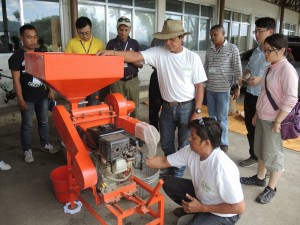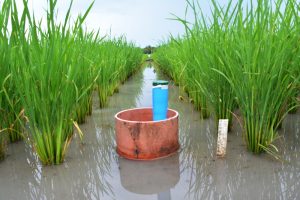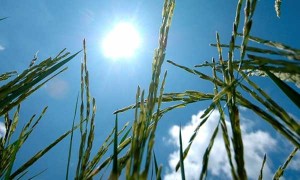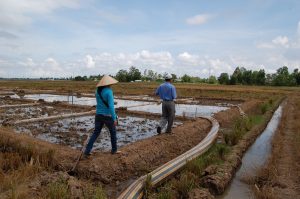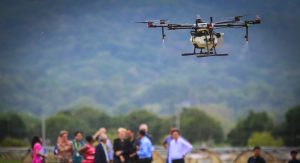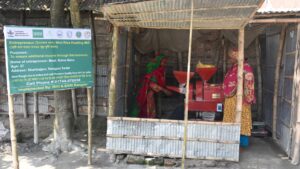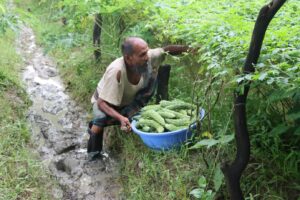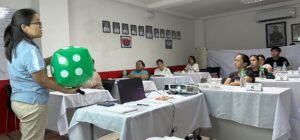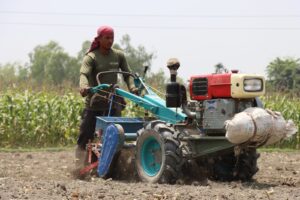Integrated rice culture and aquaculture could help meet global food security, make rice production sustainable, and generate more income for farmers.
Studies have shown that rice-fish culture increases rice yields, reduces nitrogen fertilizer input, and lowers methane gas emissions compared to monoculture farming.
It has also been estimated that, if all suitable rice areas employed rice-fish farming, it would produce more than 140 million tons of animal protein per year.
Read the story @SciTech Daily
IRRI, WorldFish, and Myanmar work together to optimize rice-fish farming productivity
IRRI, together with WorldFish and the Ministry of Agriculture, Livestock, and Irrigation of Myanmar is exploring opportunities to improve the livelihood, income, and nutrition of smallholder farmers in Myanmar by maximizing the combined productivity of rice and fish farming.
Research results conducted in Myanmar and some neighboring countries through the ACIAR-funded Rice-Fish project show that improved rice-fish farming offers a chance for farmers to produce a greater range of food and earn more income while only having minimum paddy modifications. “In Myanmar, growing fish together with rice has not affected rice yield. It has even increased farmer income by 9% in Maubin, Ayeyarwady Region, and 132% in Letpadan, Bago Region”, reports IRRI scientist Alexander Stuart.
Rice-fish farming could help boost farmers’ income in Myanmar’s “rice bowl”
Aquaculture production in rice-based cropping systems could potentially boost farmers’ productivity, income, and nutrition in the Ayeyarwaddy Region, the country’s main rice-producing area.
Funded by Australian Centre for International Agricultural Research (ACIAR) and the Department of Foreign Affairs and Trade, the 12-month mini rice-fish project aims to assess the potential of integrated rice-fish business models to increase the income of farmers in the disadvantaged flood-prone areas of the Ayeyarwady Delta.
Rice-fish systems
A rice-fish system is an integrated rice field or rice field/pond complex, where fish are grown concurrently or alternately with rice. Fish may be deliberately stocked (fish culture), or may enter fields naturally from surrounding waterways when flooding occurs (rice field fisheries), or a bit of both. Fish yields can range widely from 1.5 to 174 kg/ha/season depending on the type of rice-fish system, the species present, and the management employed.

